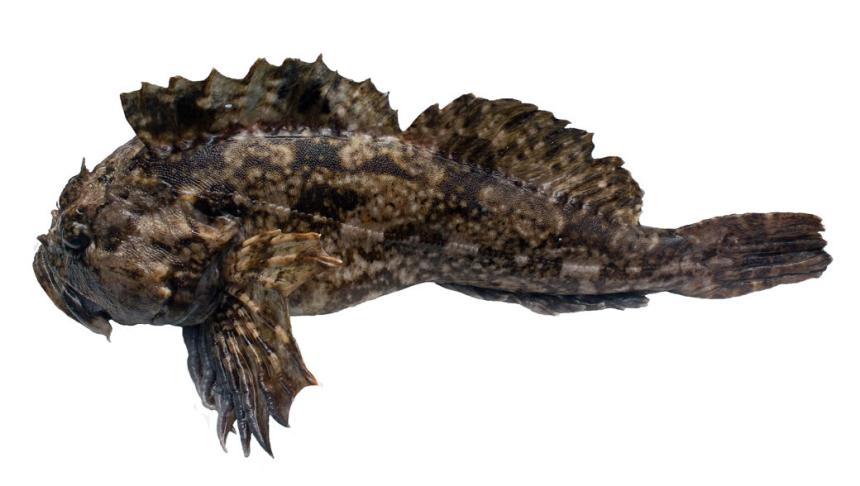Commonly caught by recreational harvesters off the outer Washington coast and in Puget Sound.
Cabezon eggs are toxic.
Description and Range
Physical description
The body of a cabezon is olive green, brown, reddish or grey on the dorsal side with a white or greenish belly. They have two fins on the back and 5 soft rays on the pelvic fins. They lack scales and have a fleshy skin flap between their nostrils. The upper preopercular spine is stout and slightly curved. Cabezon have small teeth and a large, branched cirrus above each eye. Cabezon is the largest of the sculpin species found in Washington waters.
Cabezon can grow up to 99 cm (38.9 in) in length, and 6.8 kg (15 lbs) in weight. Maximum age is at least 14 years old.
Geographic range
They range from Sitka, Alaska, to central Baja, California. They are found from the intertidal to 76 m (250 ft) in depth. They are demersal, solitary, and usually associated with reefs, boulders, kelp beds, or eelgrass.
State record
- Weight
- 25.20 lbs
- Angler
- Tony L. Rossberg
- Location
- Hale Passage (near Fox Island), Pierce County
- Date Caught
- May 22, 1992
Conservation
Conservation actions:
